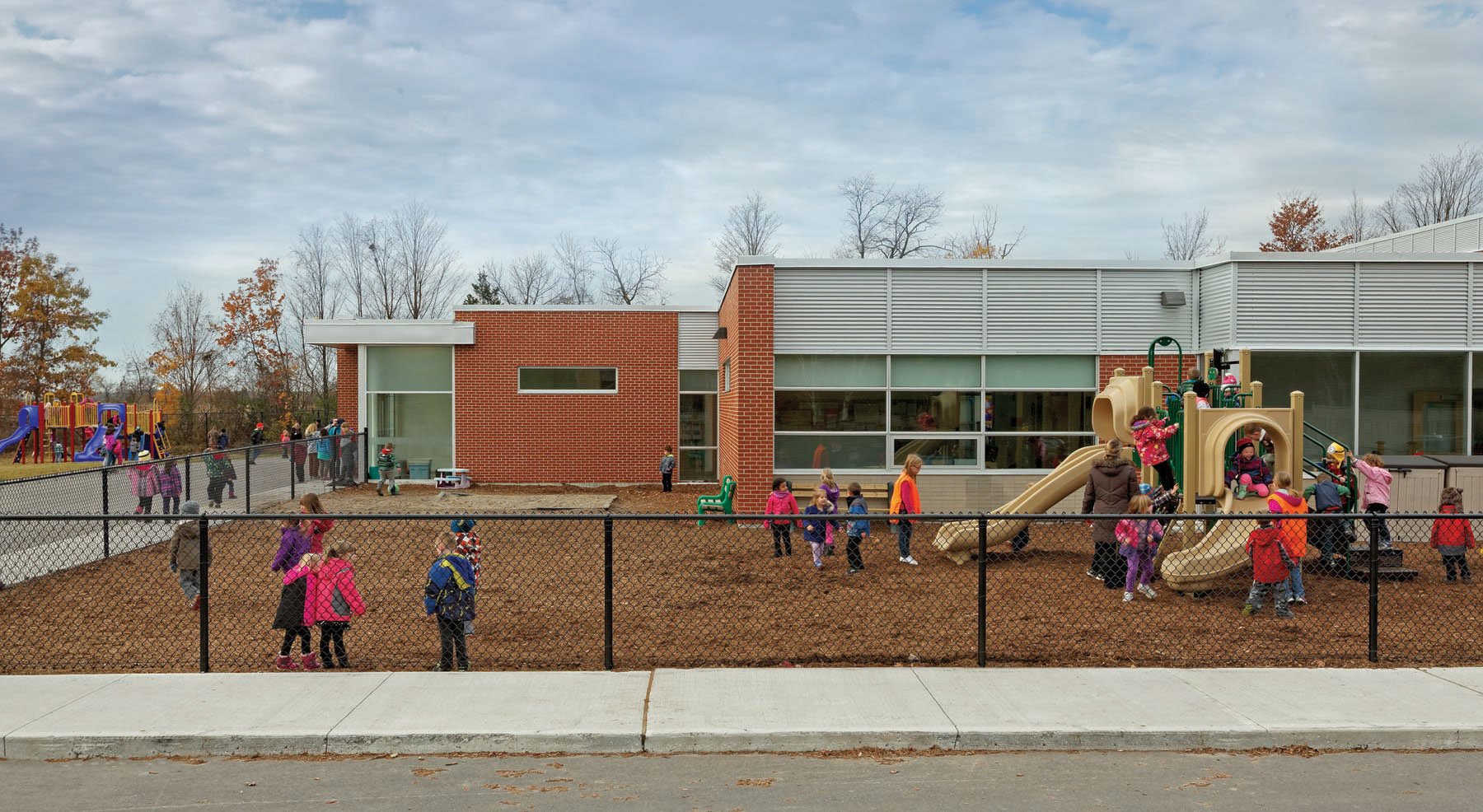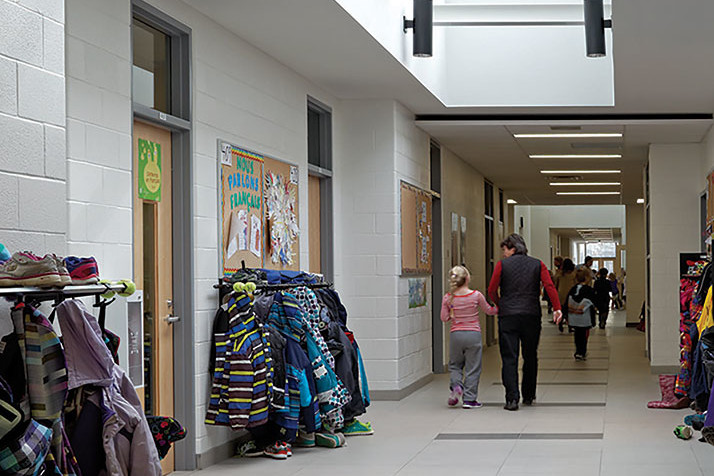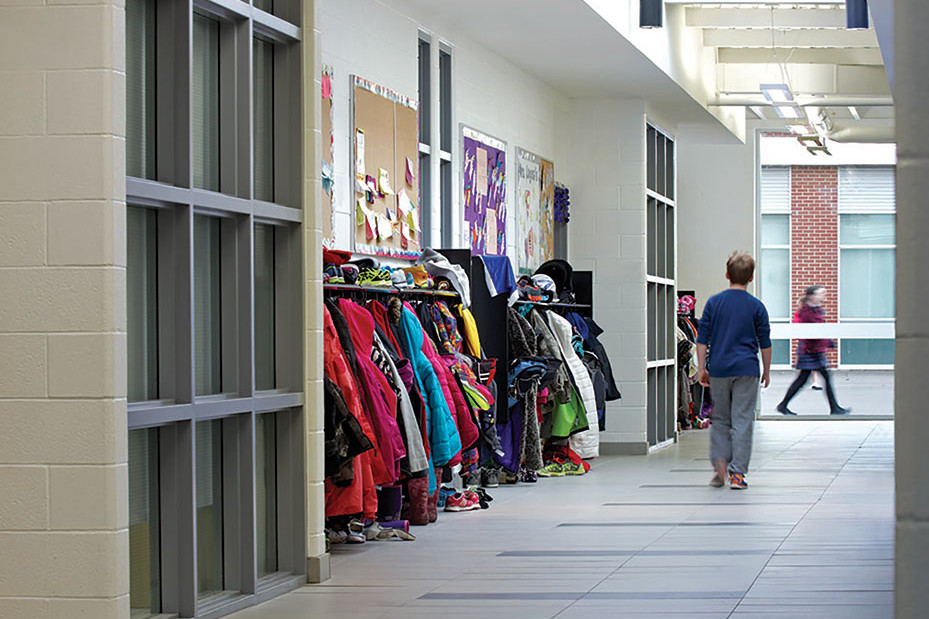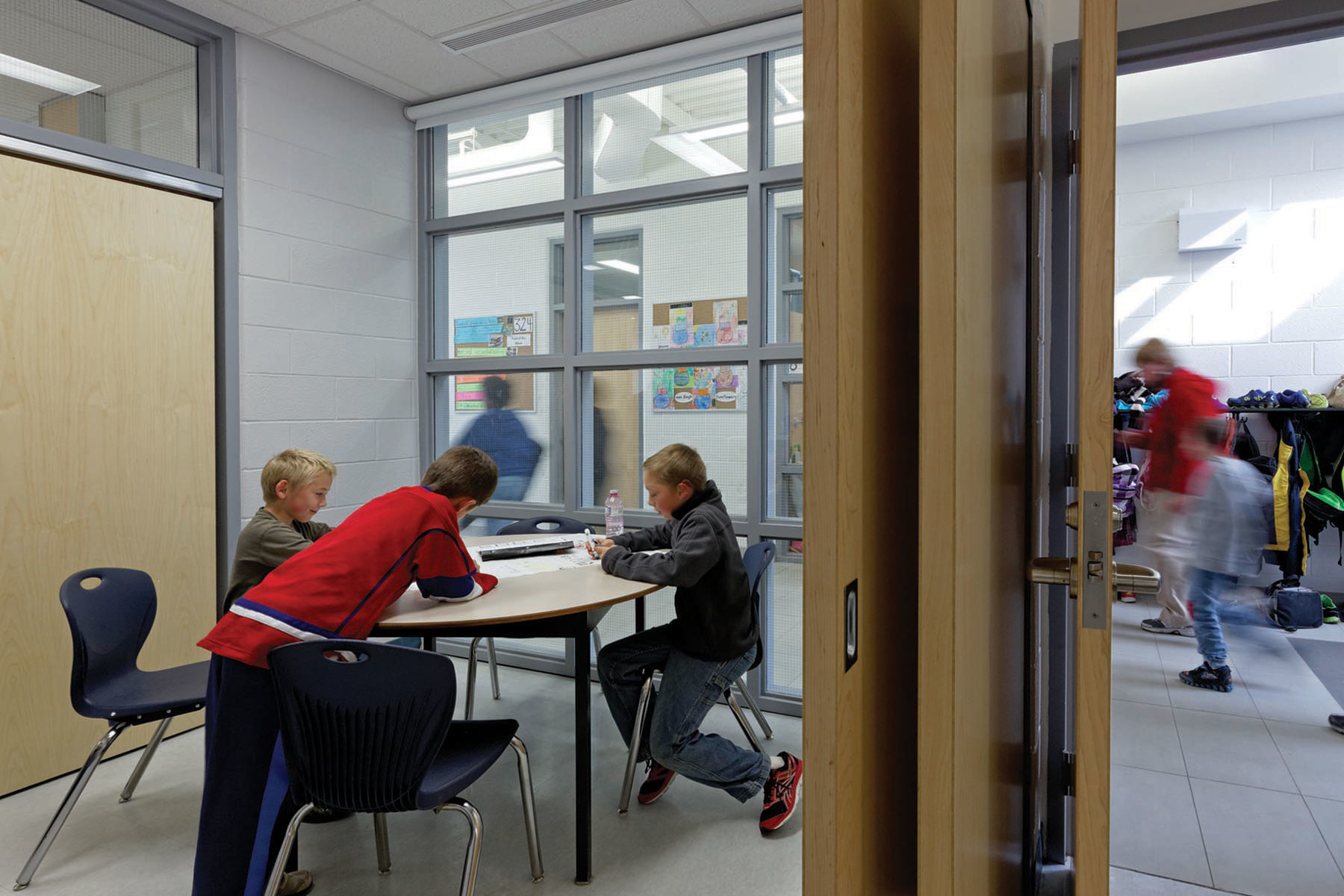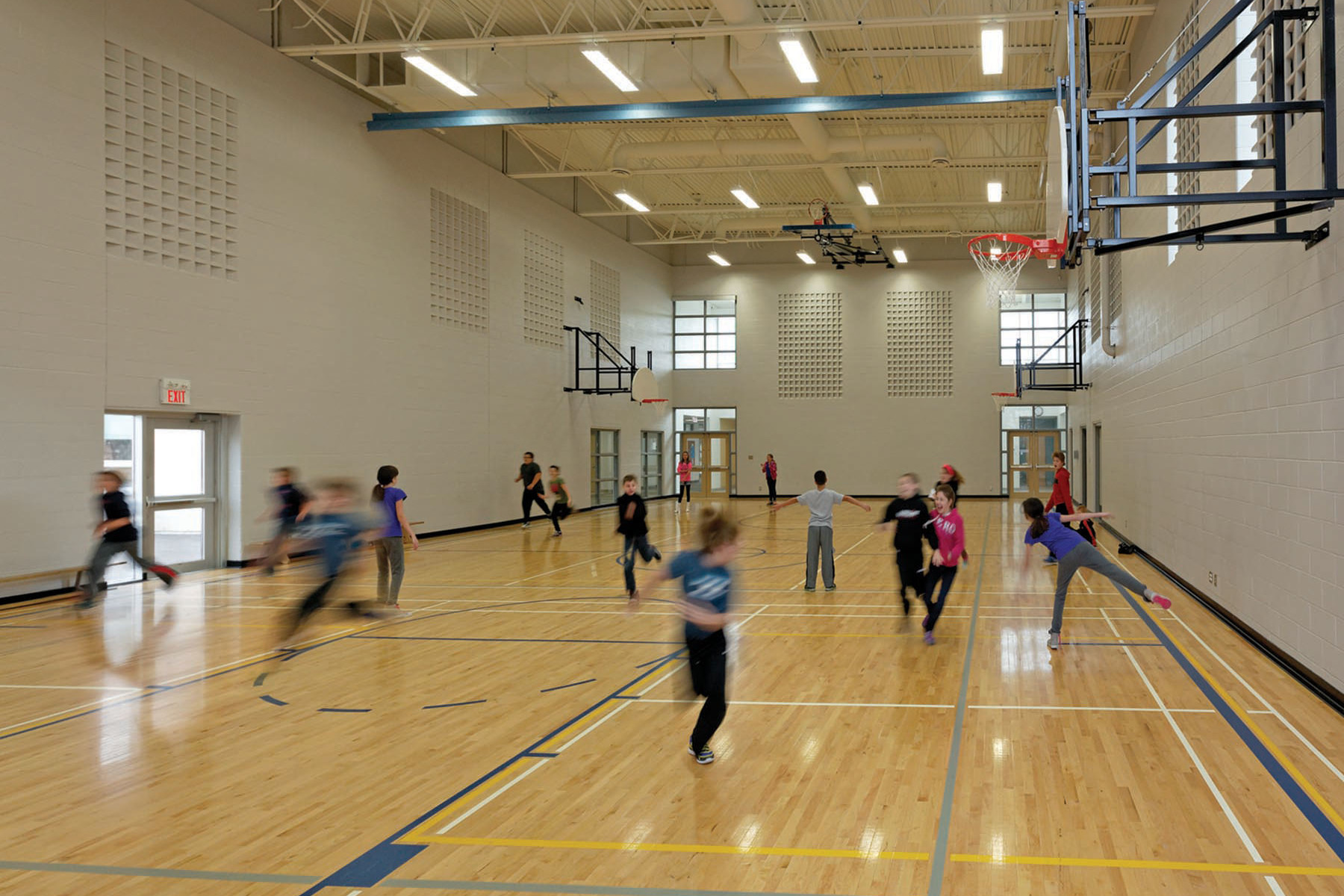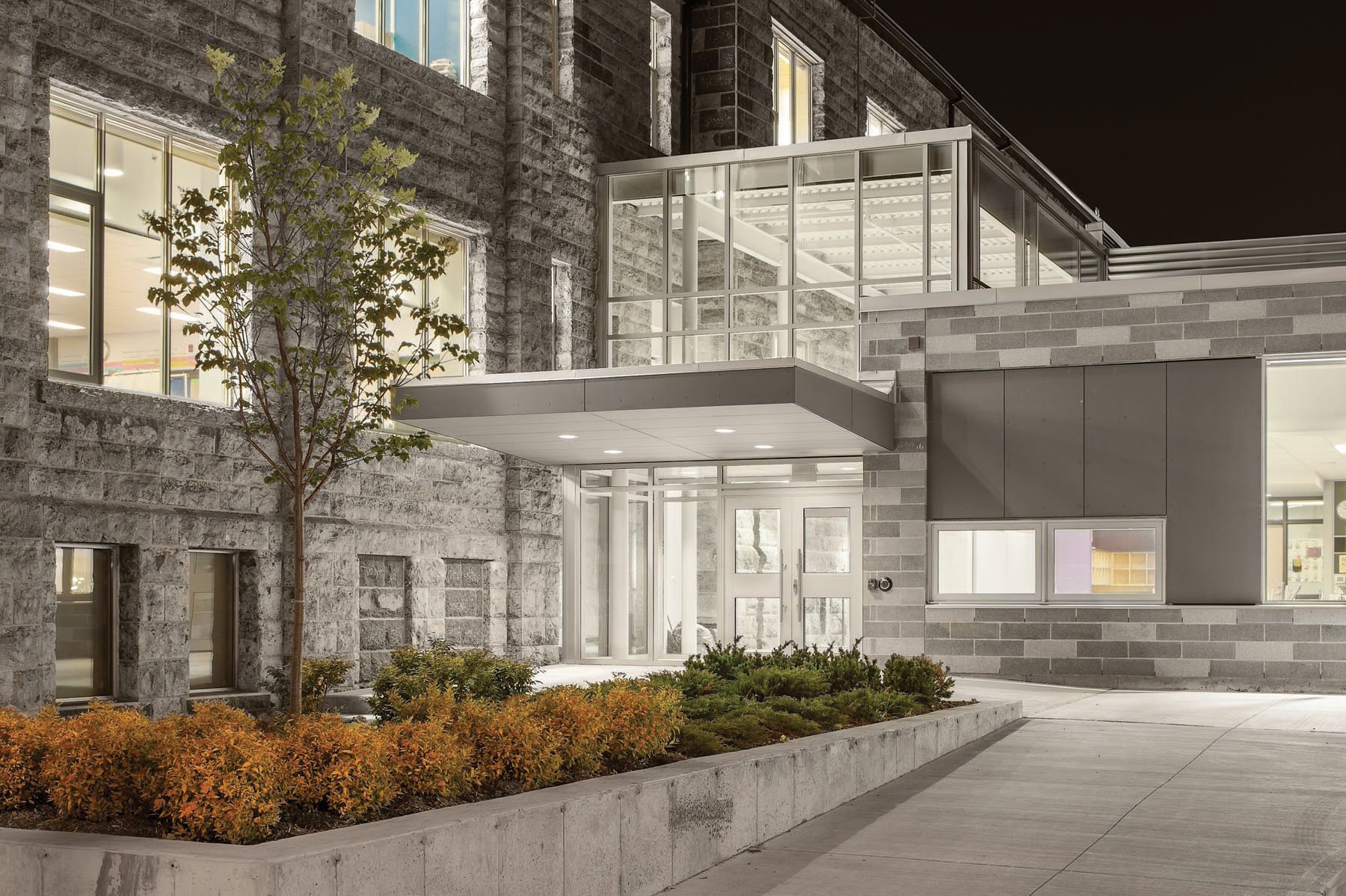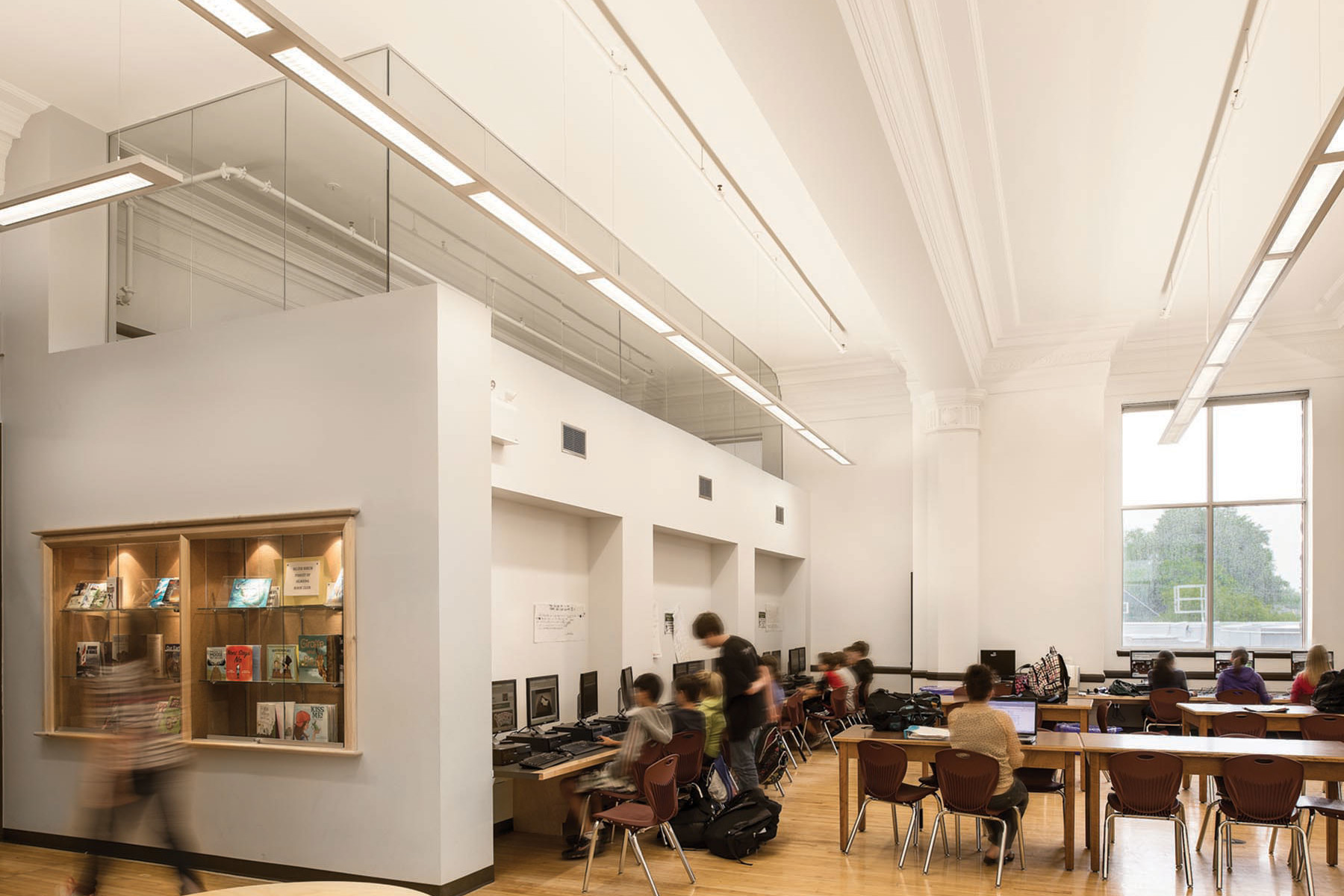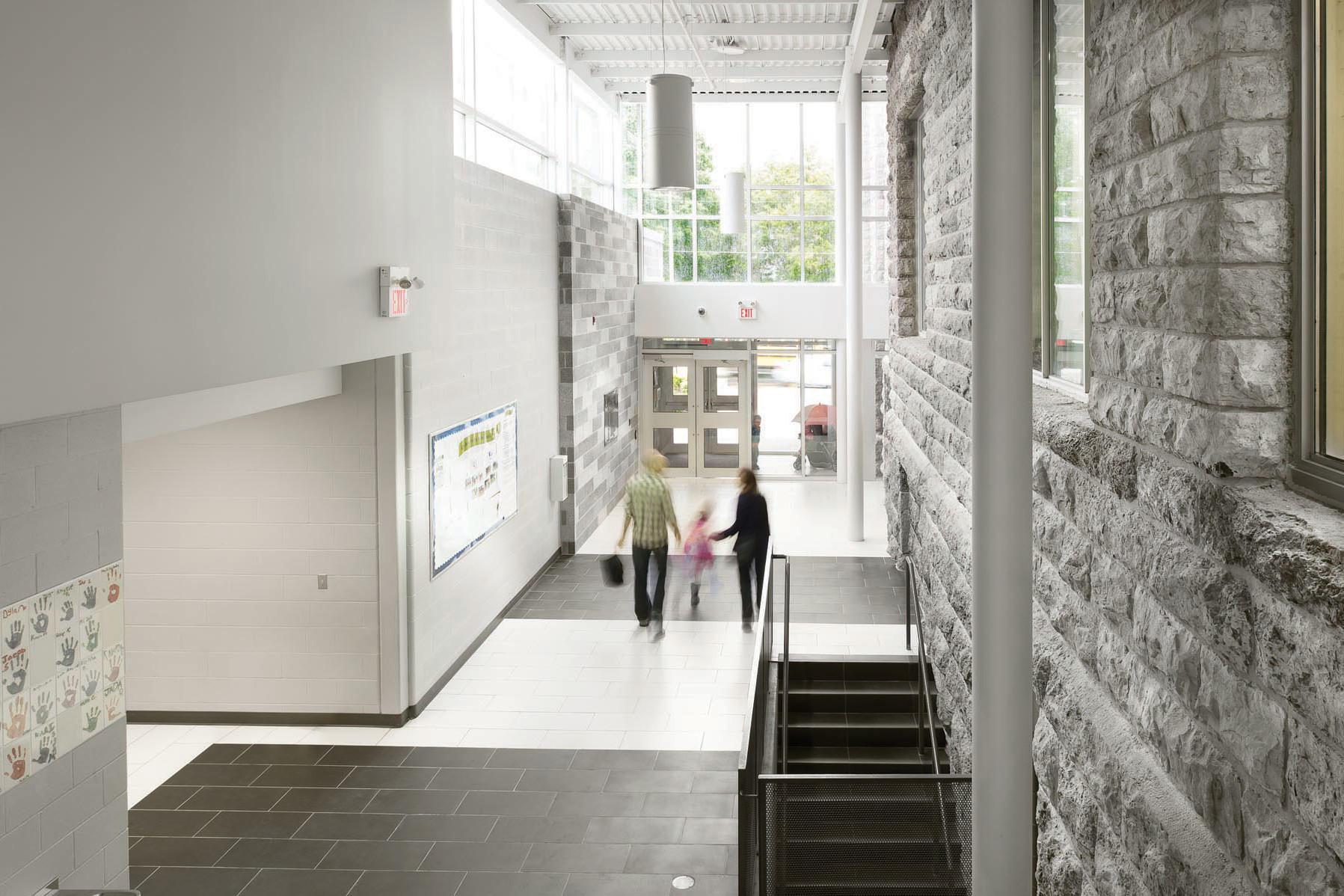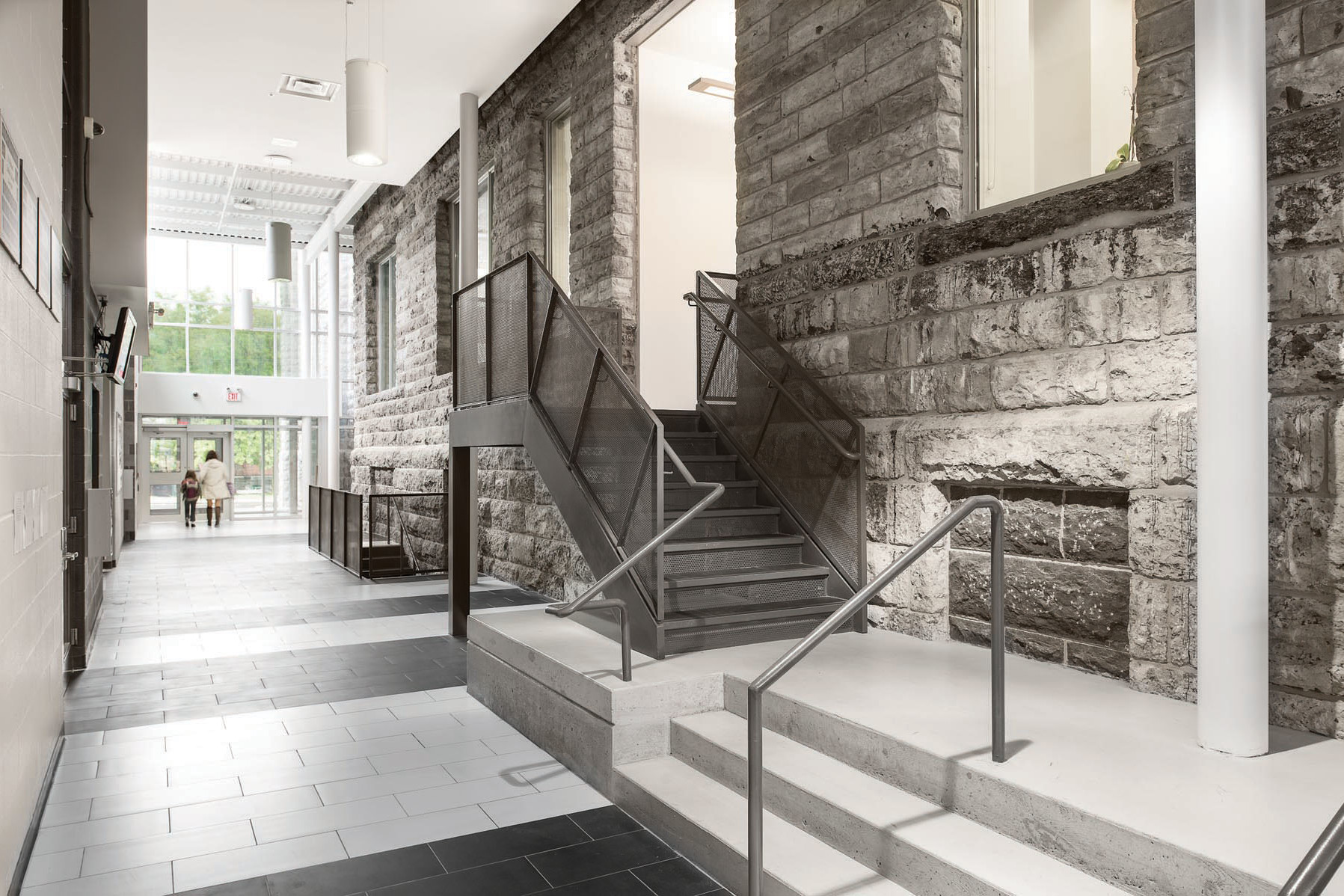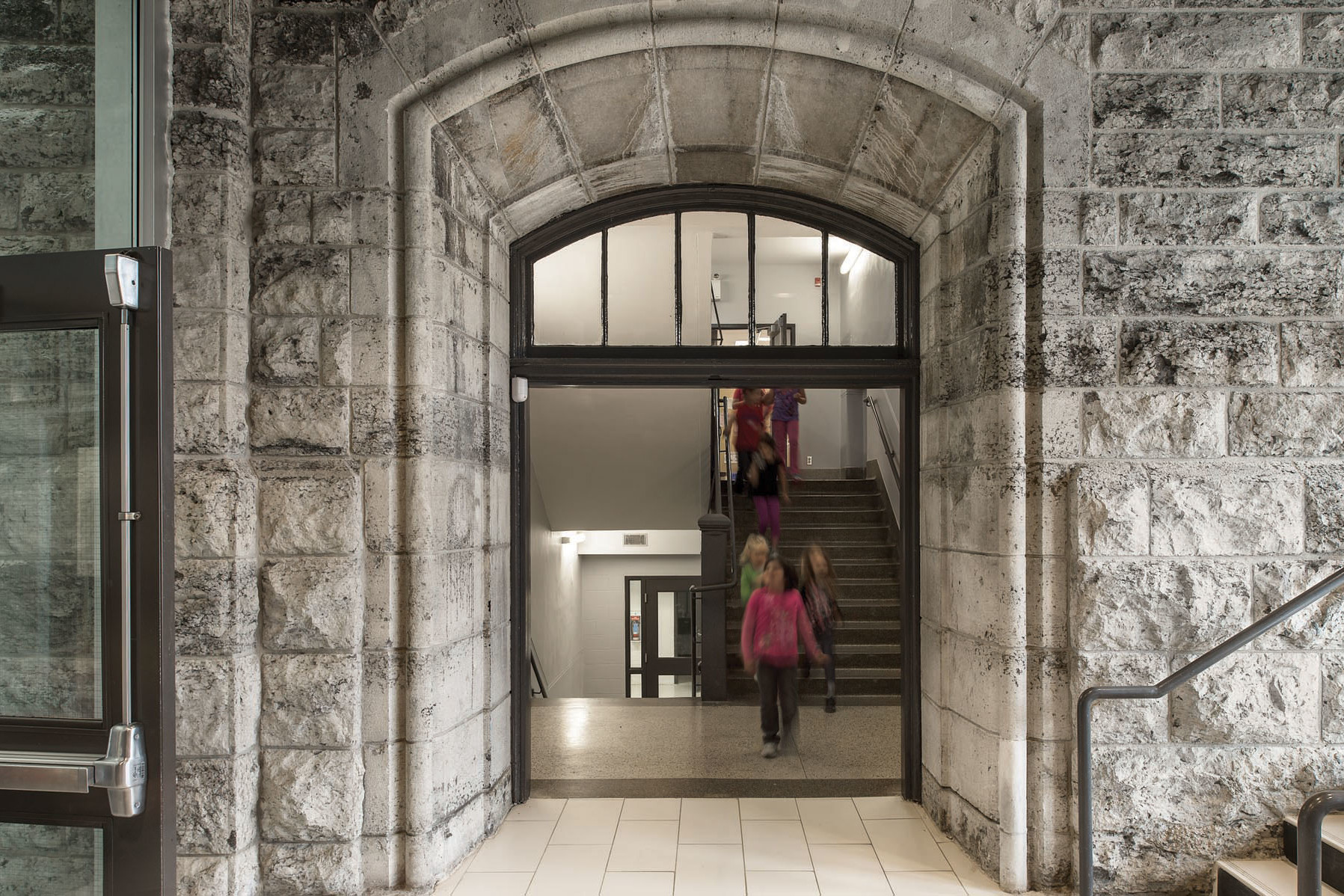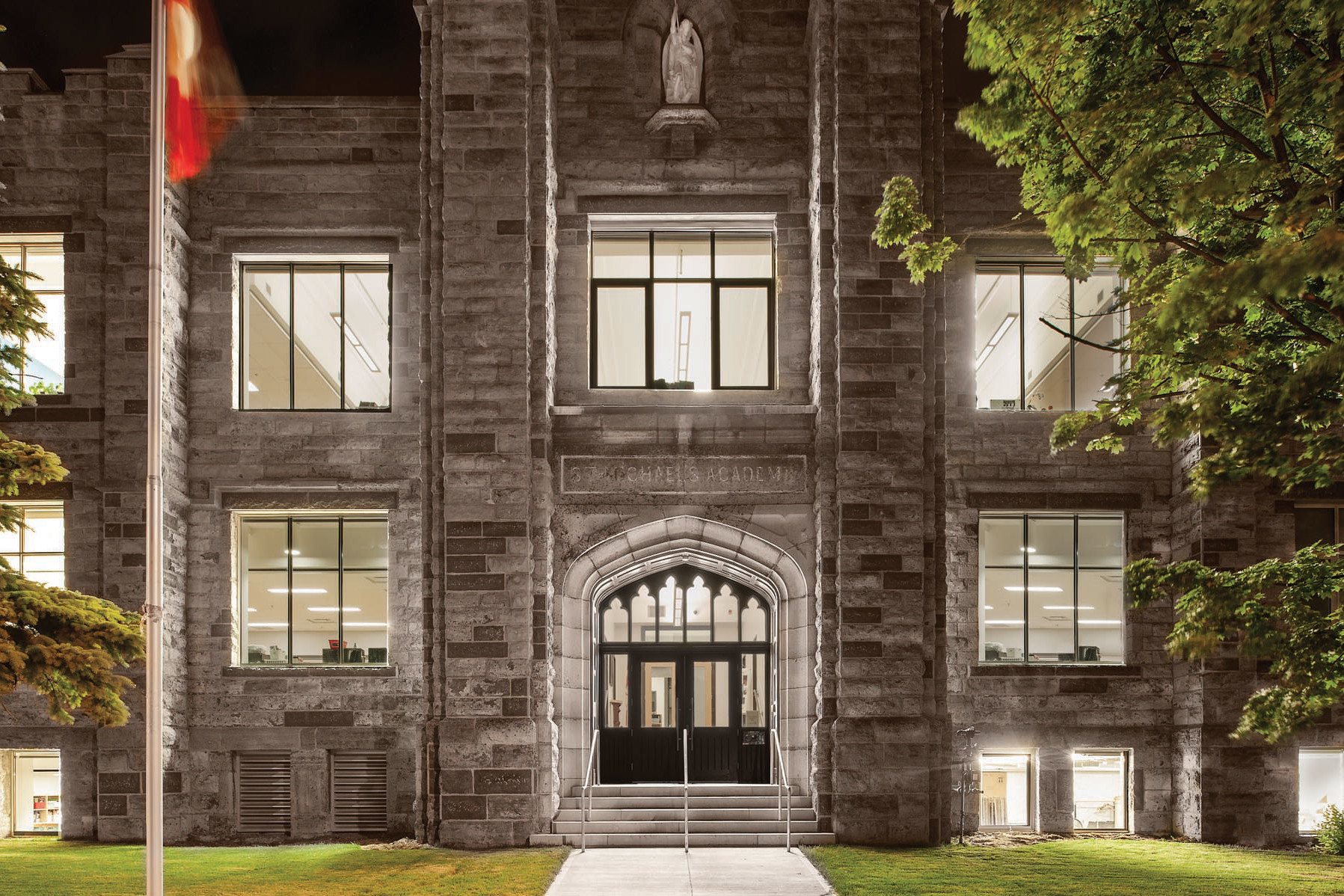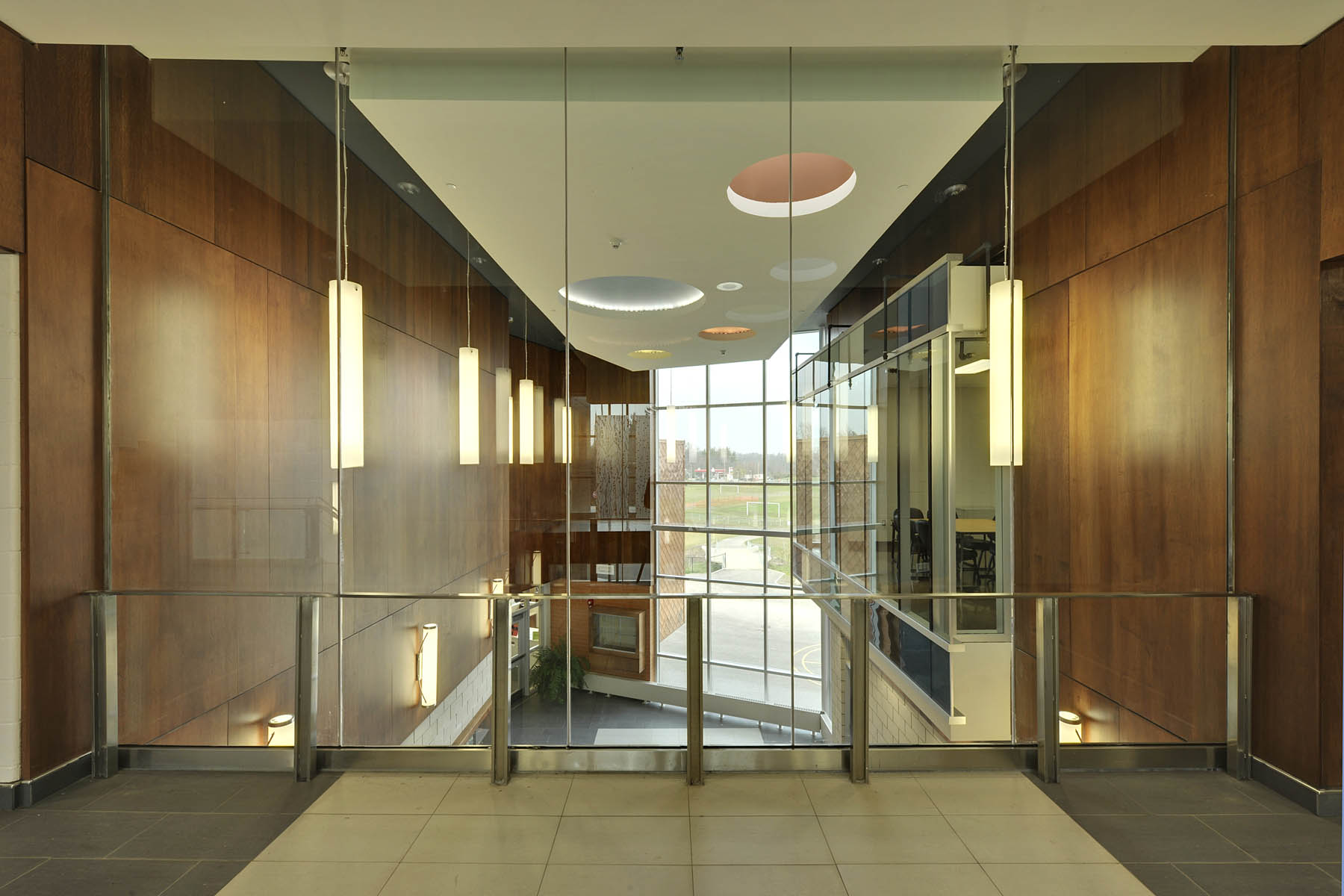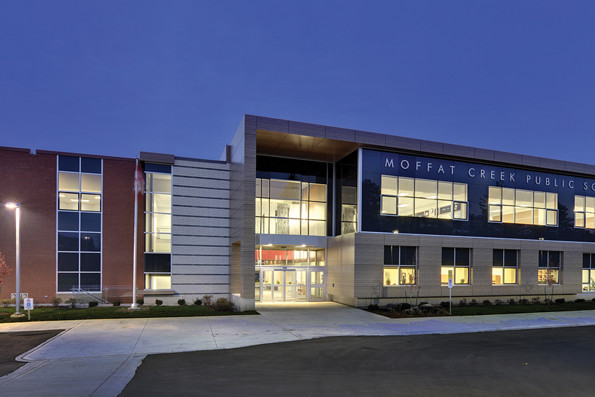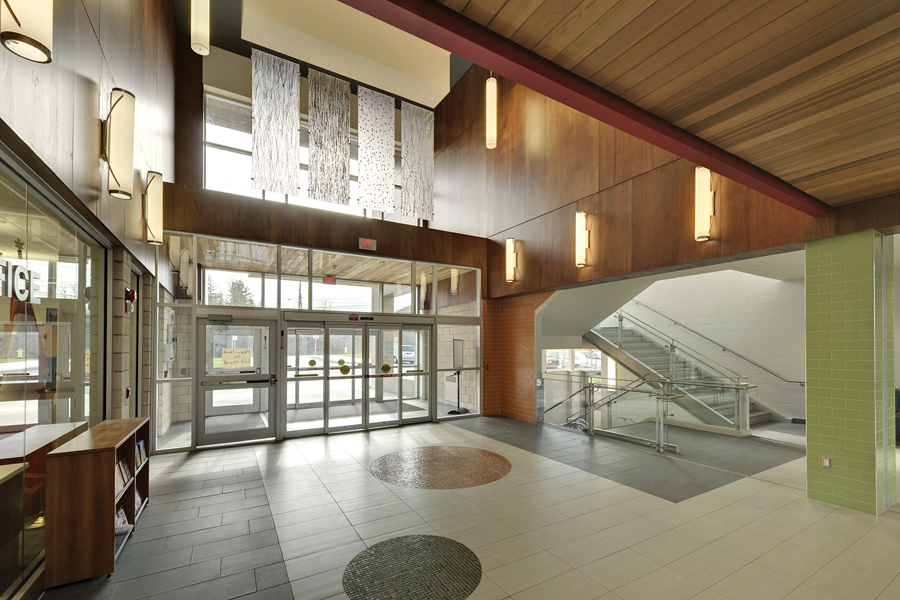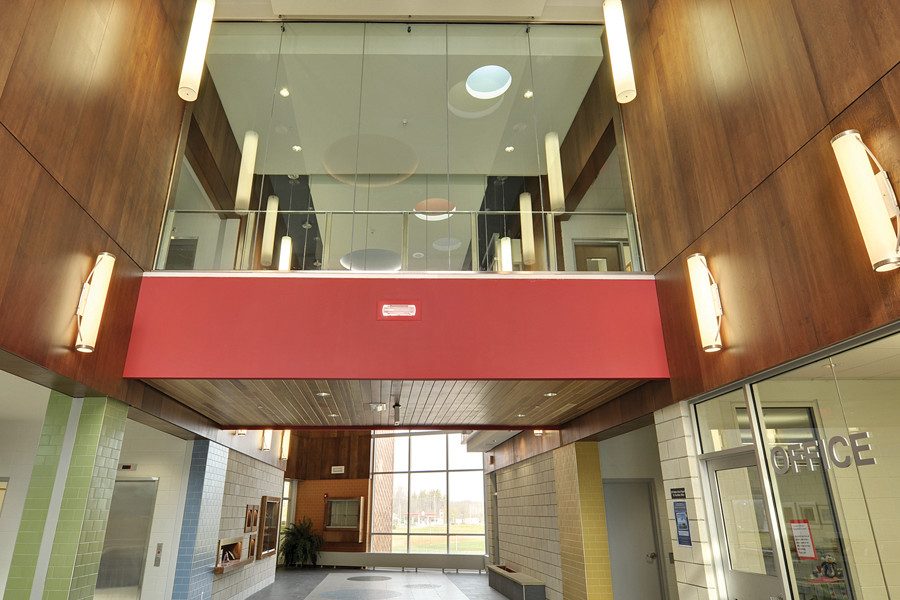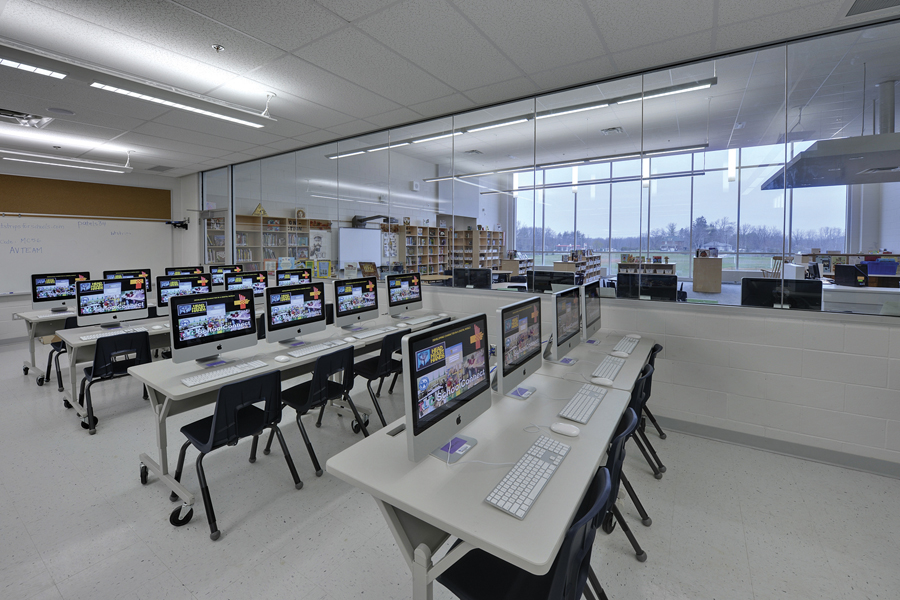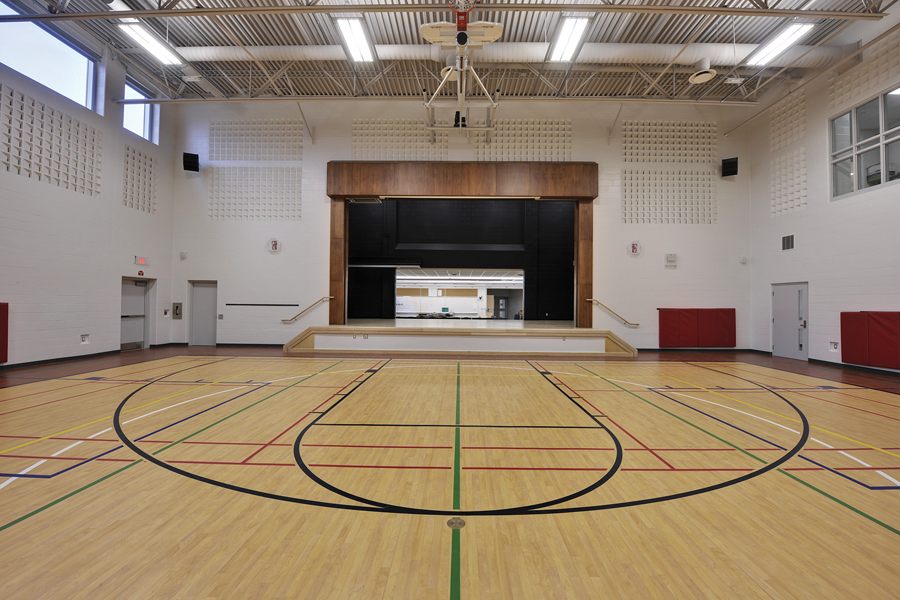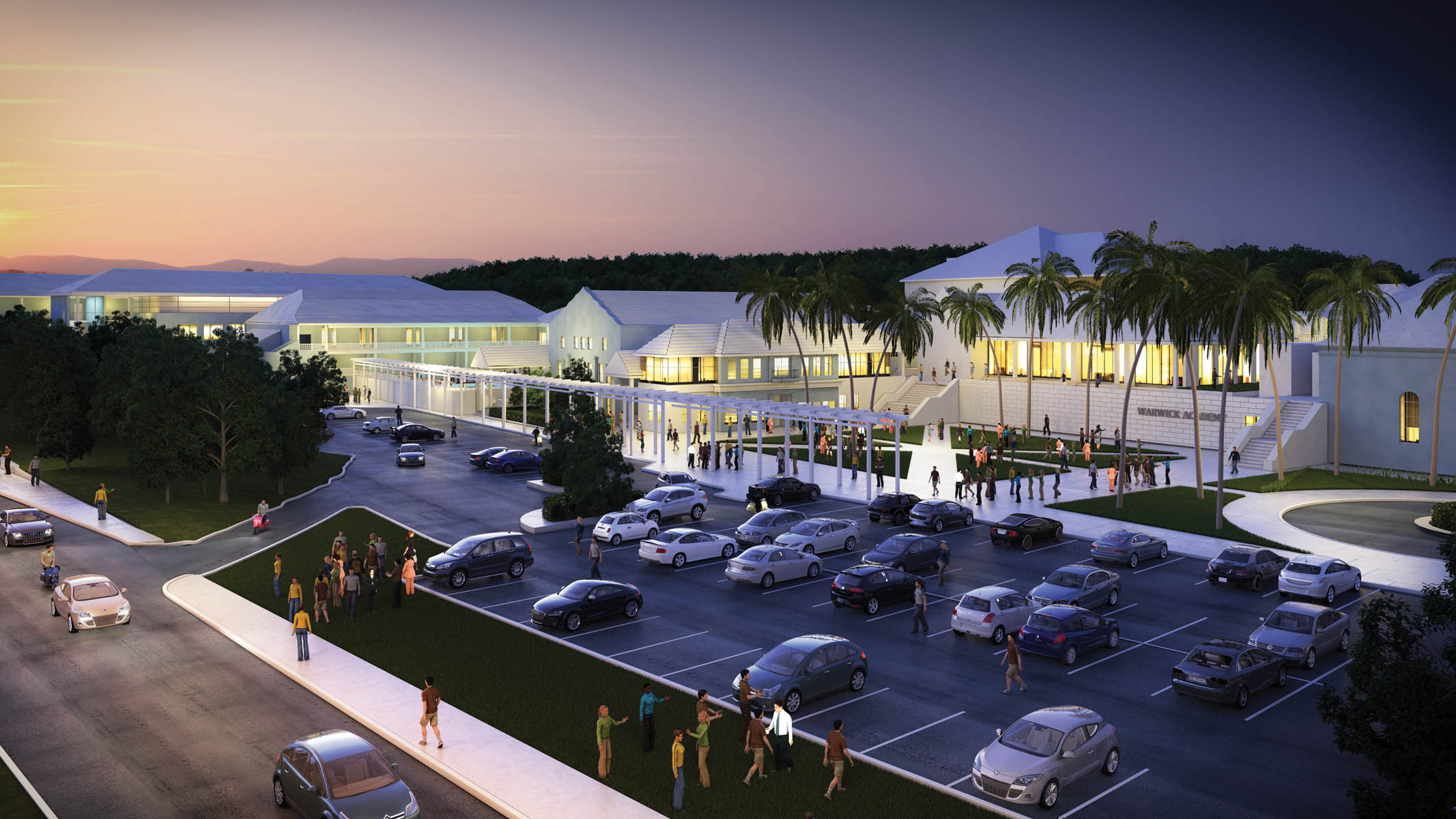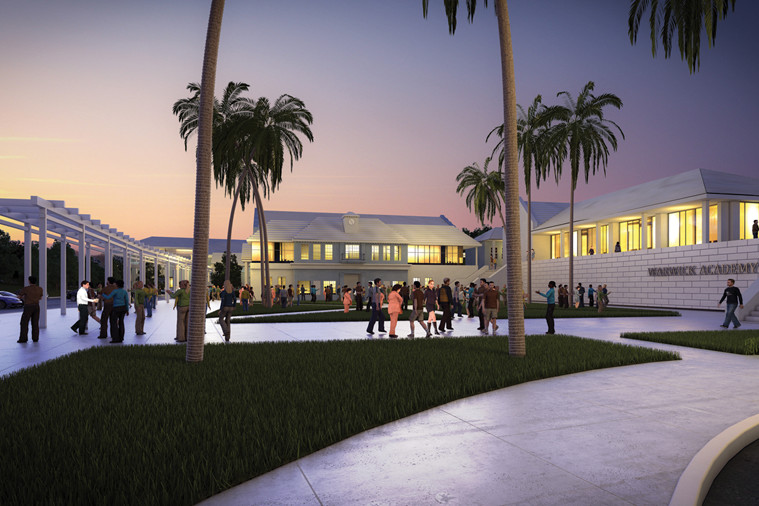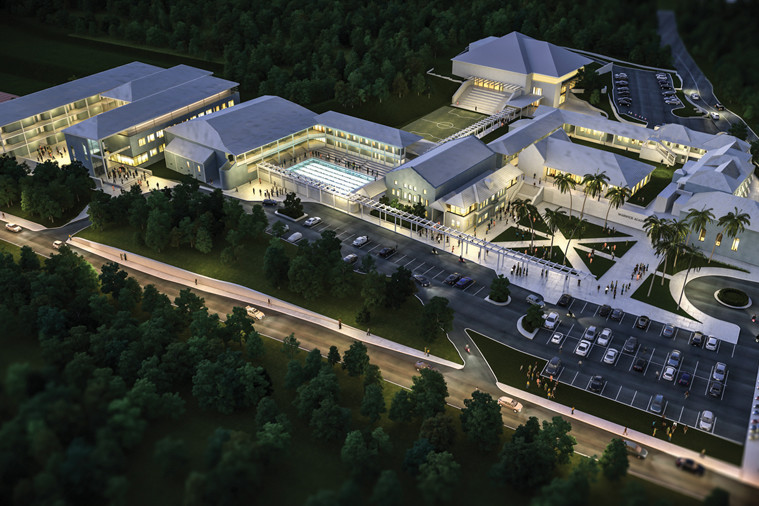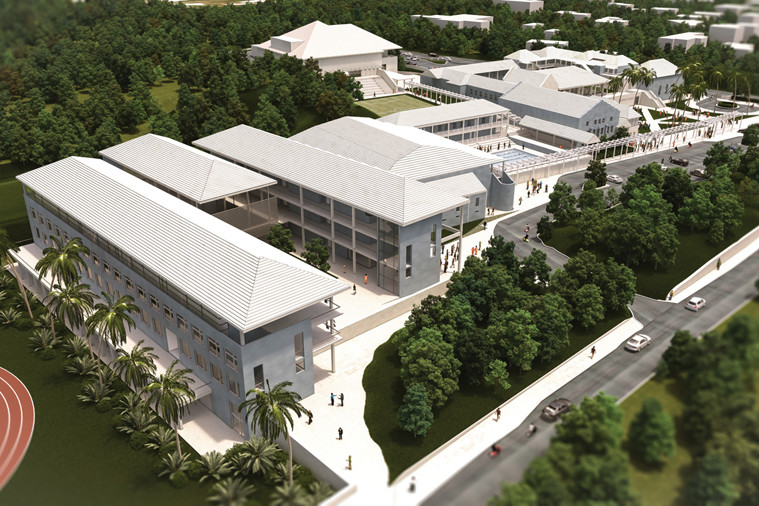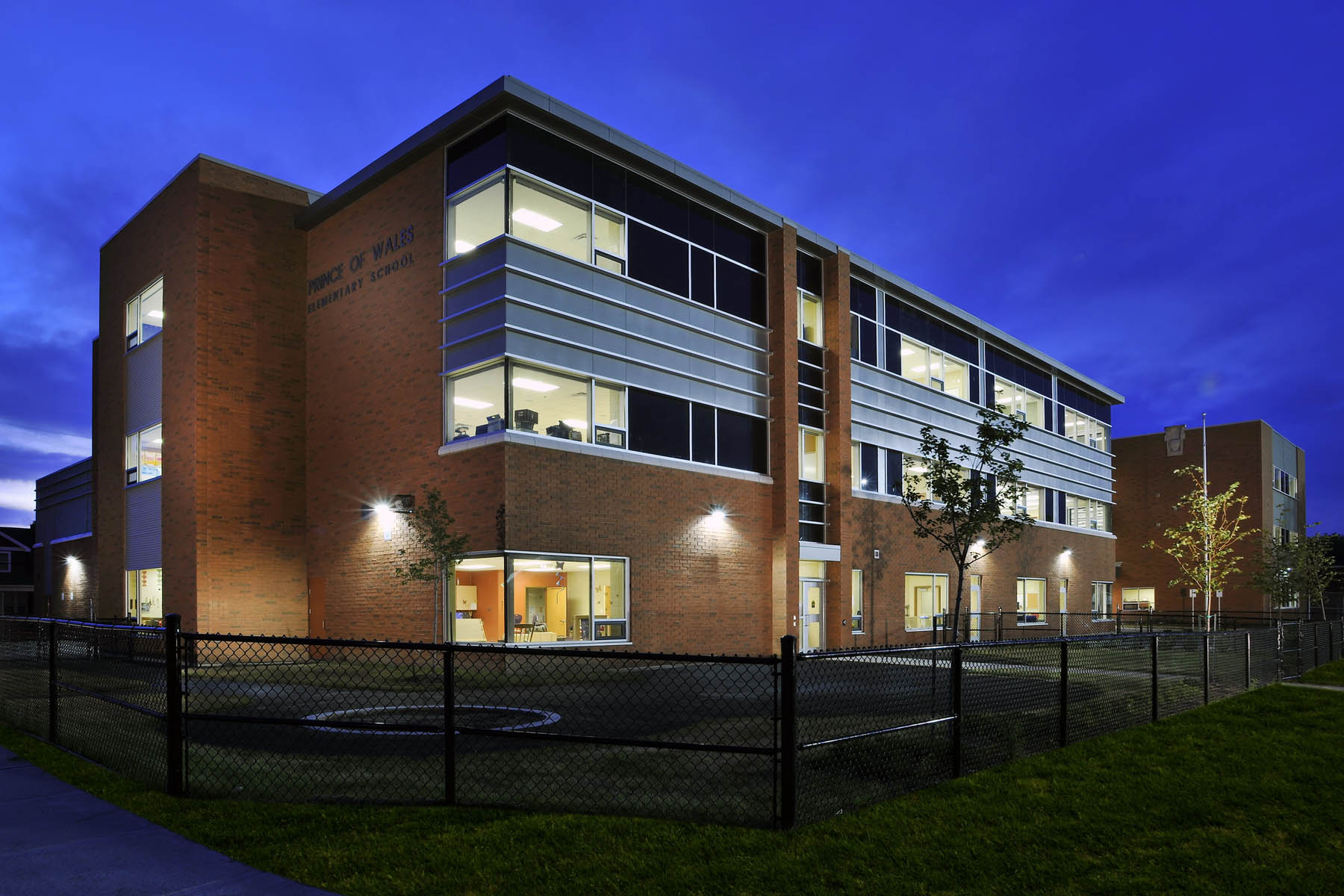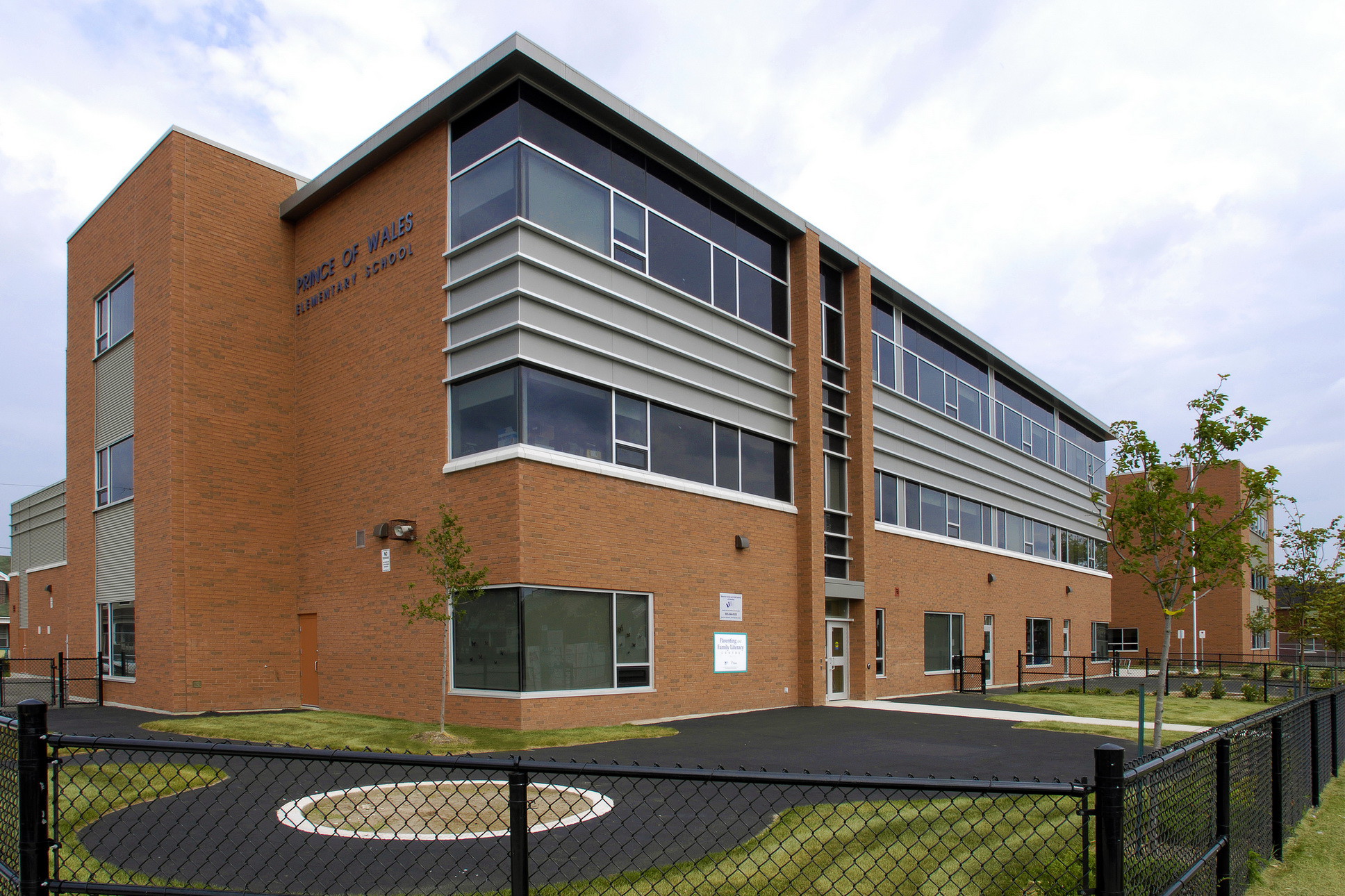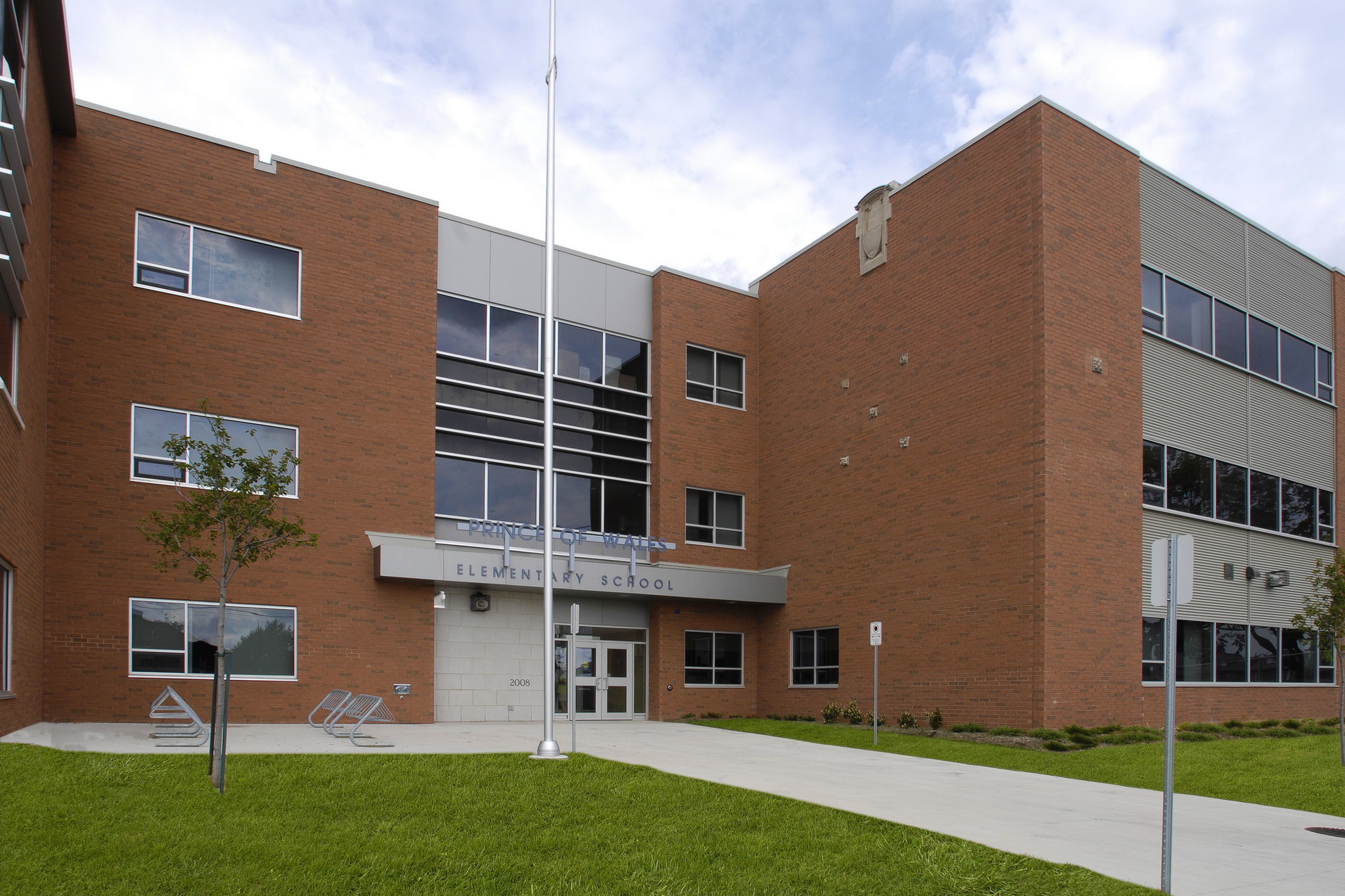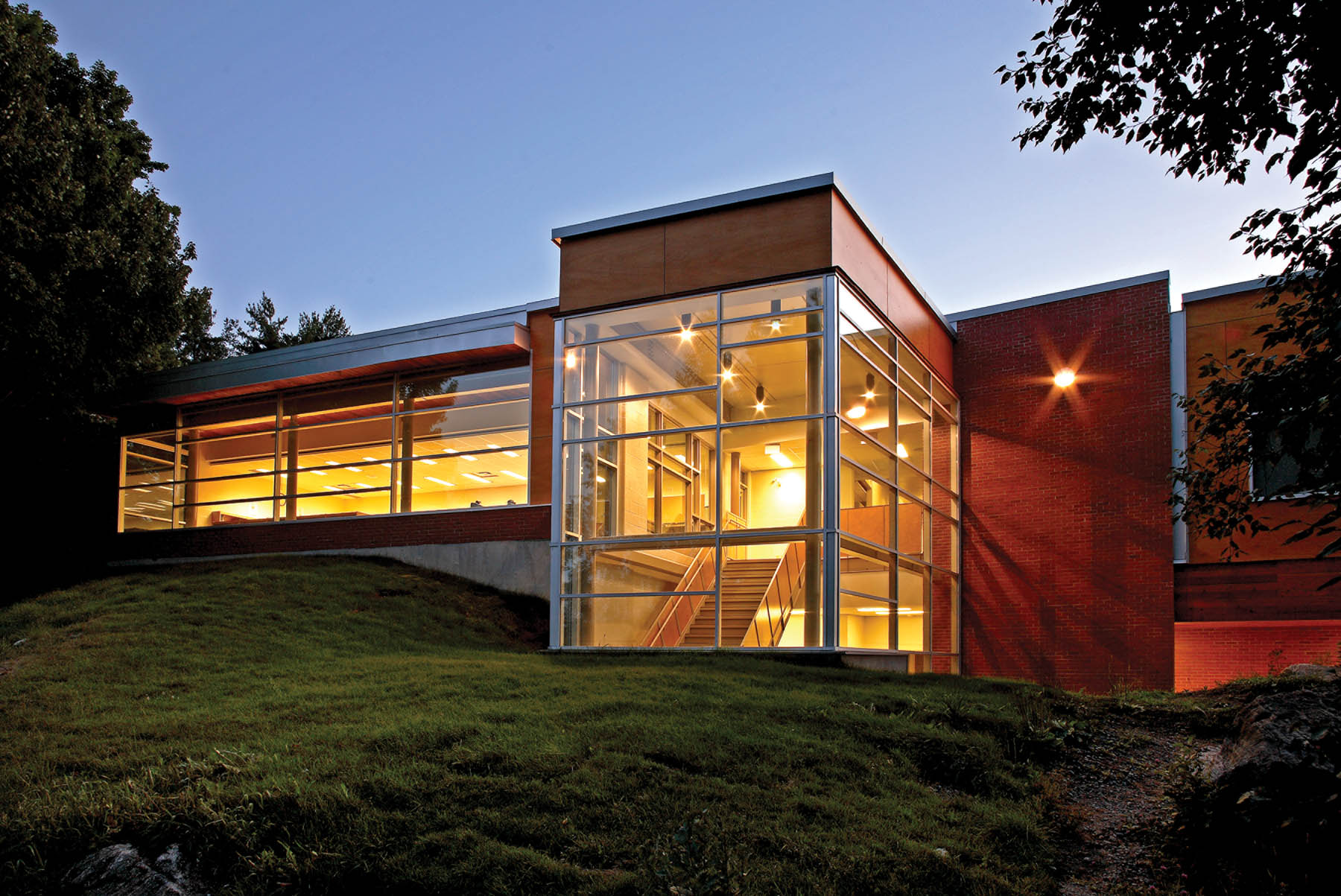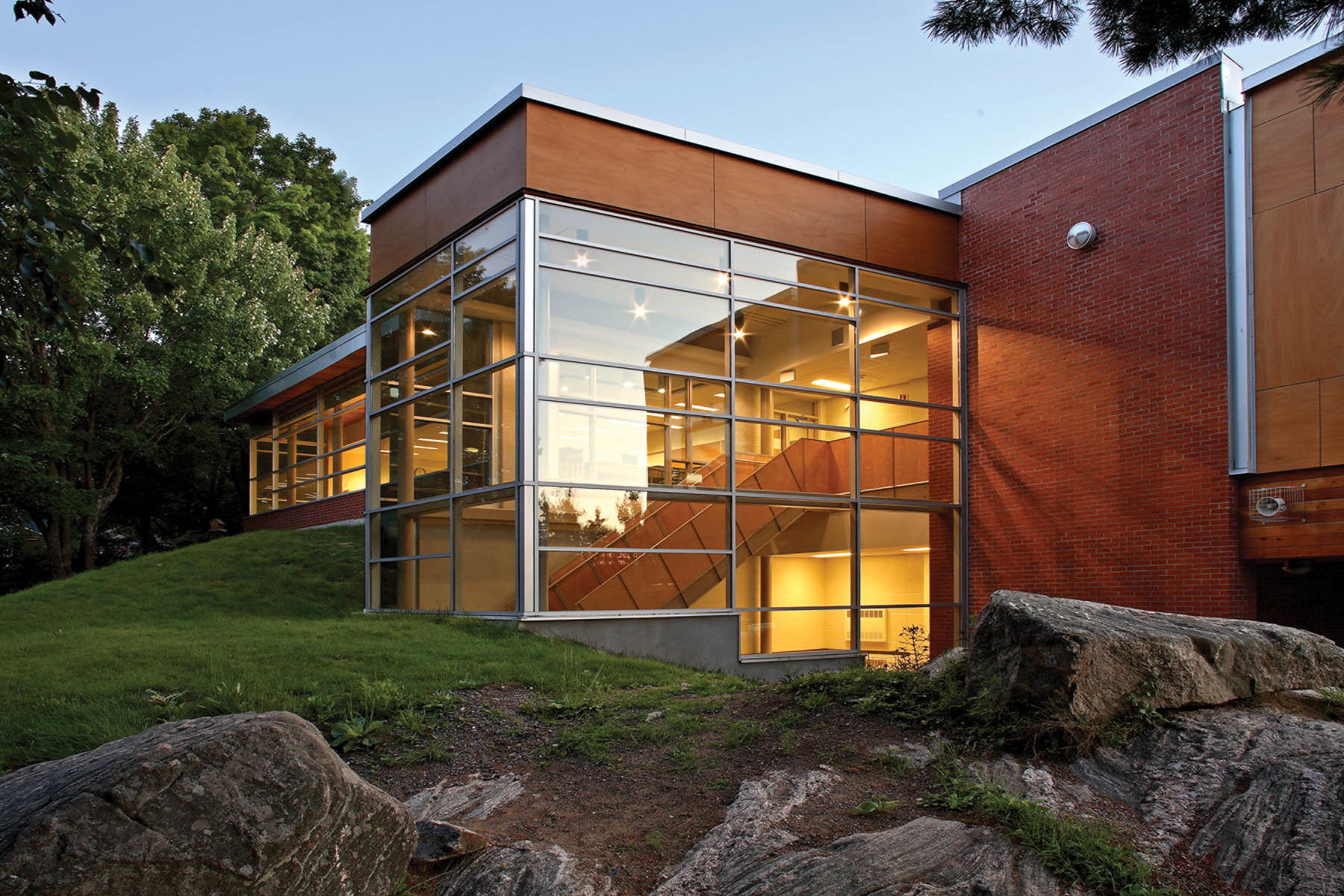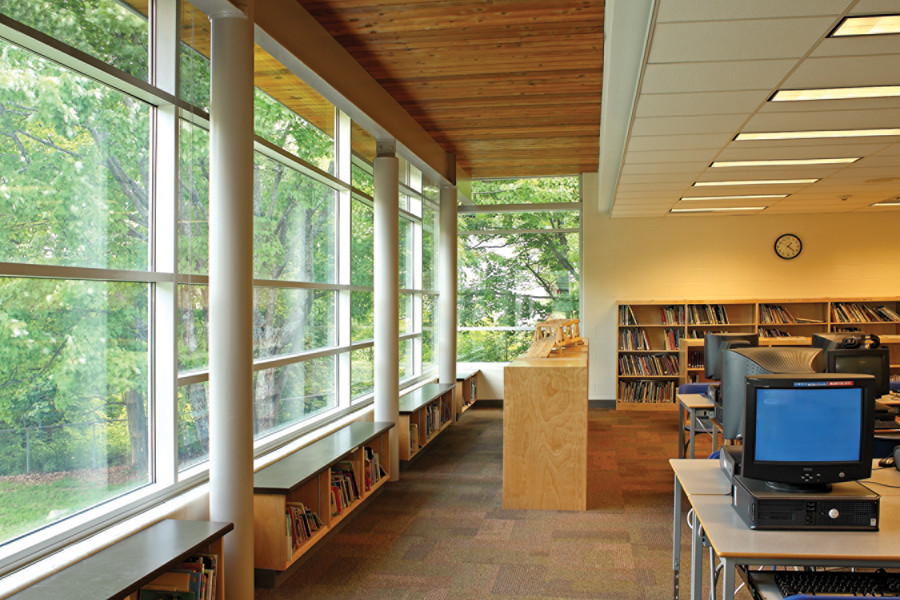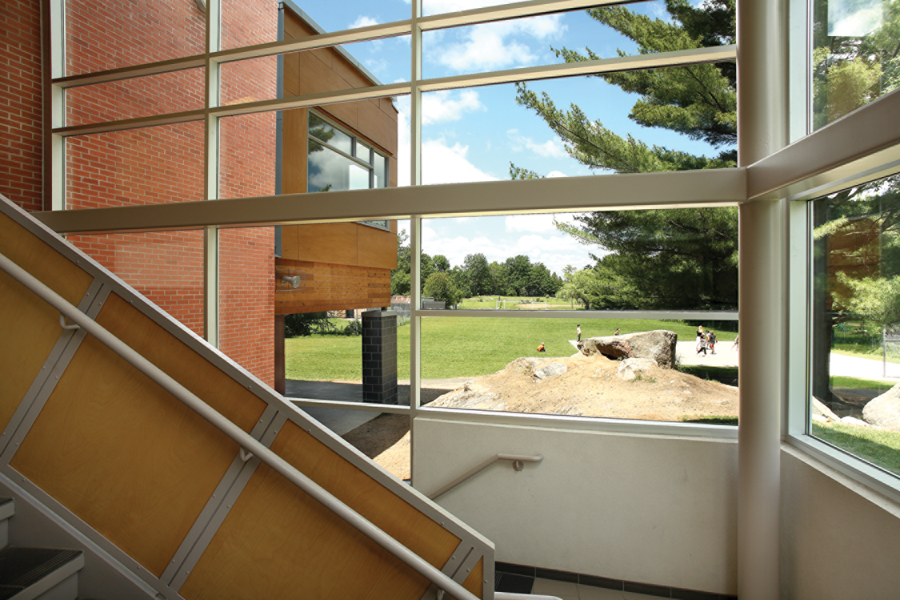St. Peter Catholic Elementary School & St. Paul Catholic Secondary School
In 2009, +VG Architects was retained to continue the work of the ARC process the ALCDSB had began in 2006.
This included a Condition Assessment of the existing St. Peter Catholic Elementary School. +VG assessed the architectural feasibility of Final Recommendations 3 and 4 of the Accommodation Review Committee. The recommendations under review included the construction of a new St. Peter Catholic Elementary School on the site of the existing St. Paul Catholic Secondary School, as well as an addition to St. Paul Secondary School to accommodate Grade 7 & 8 students. +VG successfully facilitated a series of design meetings while being cognizant of the underlying tensions still present as a result of the many difficult decisions the committee had to make during the ARC process. Building a trust relationship with the committee first by acknowledging their difficult work to date and then focusing on the opportunities, was key to the success of the project.
The project has resulted in a reinvigorated education facility now known as the Quite West Catholic Campus. The existing secondary school building was added to, creating new specialized classrooms for fine arts, instrumental and vocal music, and fitness. The gymnasium was completely refurbished and seven regular classrooms were added to accommodate a change to a Grades 7 to 12 learning environment.
A new 1-storey, 25,000 square foot new elementary school is co-located on the site servicing a student population of 300 from Junior kindergarten to Grade 6. The two facilities work together and take advantage of the opportunity to share public spaces, such as two sports fields, two gymnasiums, and a chapel for special events and community activities. Even with the increased build-out, the project was able to maintain a wooded area at the south end of the property that both schools use to support environmental education programs.
LOCATION
Trenton, Ontario
COMPLETED
January 2014
SIZE
44,132 ft²
CAPACITY
300 FTS (St. Peter)
470 FTS (St. Paul)
SERVICES
New Construction of an Elementary School on an Existing Secondary School Site
St. Michael Catholic Elementary School
In 2007, St. Michael CES had a student enrolment of approximately 400 FTE students.
The original building, built in 1908 and 1913, had been added to again in the 1950’s and 1970’s to accommodate, at its pinnacle, a total student enrolment of 650. +VG Architects led a school Planning Accommodation Review Committee process with the Board and School Community to help clarify academic needs and facilitate the transition to a new facility right-sized for their current and projected enrolments. Key in this process was sincere listening to the concerns of the school community while reinforcing the opportunities available to augment academic and community program spaces not achievable within the existing facility.
The process resulted in the unanimous approval of the final design approach that would see the implementation of full day kindergarten, enhanced facilities for physical education and computer literacy, classroom technology improvements, and improved non-core program elements such as larger rejuvenated play yards and space for “Before and After” childcare facilities.
The re-construction of St. Michael’s School occurred within an occupied facility on a tight urban site.
LOCATION
Belleville, Ontario
COMPLETED
2012
SIZE
39,000 ft²
CAPACITY
400 FTS
SERVICES
Reconstruction
Moffat Creek Public School & Day Care
Material selections reinforce the sustainability of this highly efficient building, while fostering a connection to the natural surroundings.
+VG Architects incorporated low maintenance, durable materials into the design of the new school.
The classrooms and other major spaces are organized along one main corridor on each floor. This single corridor design provides a clear linear path of travel for students and enables efficient supervision by staff. This design also provides an important advantage – it allows each classroom and major space to have windows which enhance daylighting.
Enhanced daylighting is beneficial because it decreases reliance on artificial lighting, and studies have demonstrated a link between a naturally lighted environment and improved student performance. Artificial lighting represents as much as 30% of the energy requirement for a typical school.
LOCATION
Cambridge, Ontario
COMPLETED
2012
SIZE
67,400 ft² (School)
4,100 ft² (Day Care)
CAPACITY
2,012 FTS
SERVICES
New Construction
The Warwick Academy
The Warwick Academy, founded in 1662 is considered to be the longest continually operating school in the Western World, and is well known for its high standards of Academic Excellence.
Located on 22 acres in the heart of Bermuda, the school serves both Primary and Secondary School students, as well as an International Baccalaureate program of more than 100 students.
Over the years, and particularly, over the last half century, the school has been expanded through multiple phases of construction to provide additional athletic, arts, and academic facilities. These expansions have been typically undertaken in reaction to an immediate need with no long term Master Plan along with guiding principles for future facilities. The result is a building complex which lacks clear delineation between the various departments, complicated circulation with various floor levels that hamper accessibility, and no central focus or sense of arrival.
+VG Architects in association with local architects Botelho Wood Architects were commissioned by Warwick Academy to lead a design study to examine options to implement the Academy’s current expansion plans:
- New Learning Commons
- New secondary wing with eight new classrooms
- New International Baccalaureate centre (22,000 ft2)
- New Performing Arts Centre (16,000 ft2)
- New multi-purpose rooms for Primary and Secondary levels
- Improved parking and automobile circulation
- Improved pedestrian circulation
- New 12 unit residential development
Previous expansions at Warwick Academy have typically been undertaken in reaction to an immediate need, without the benefit of a long-term Master Plan. The +VG study provided guiding principles for future facilities, and recommendations to improve the existing campus, with better delineation between various departments, simplification of the circulation and enhanced accessibility. The study examines options to develop a central focus for the campus and create an appropriate sense of arrival at this remarkable institution.
LOCATION
Bermuda
COMPLETED
2012
SIZE
22,000 ft² (New International Baccalaureate centre)
16,000 ft² (New Performing Arts Centre)
SERVICES
Master Plan
Prince of Wales Elementary School
The new Prince of Wales school is a state-of-the-art facility, with up-to-date classroom amenities for the students.
The design is based on the Provincial elementary education program, and a versatile “Town Square” concept. The new accessible, multi-use facility is integrated into the neighbourhood, permitting after-hours use by the community. Full-sized playfields were relocated in the location of the old school.
The architectural design is intentionally modern in style, intended to be a positive statement about urban revitalization in this older downtown neighborhood. The new school’s “warm and inviting character” is due to the contrast between distinctive modern features like the glass curtain wall and the antique-looking red-brown brick. The project re-used many historic stone artifacts from the original school.
Located in the heart of urban Hamilton, the design has been praised for its “out-of-the-box thinking and efficient site planning”. Prince of Wales elementary, in the shadow of famed Ivor Wynne Stadium, won the Award of Merit in the City of Hamilton’s 2009 Urban Design and Architecture Awards. Winners of the juried contest must excel in multiple areas:
- Address scale, materials, and building orientation within context
- Create a quality pedestrian environment
- Respect heritage
- Incorporate energy efficiency and sustainability
- Be well executed
The awards jury said this put an “important community use” on a “potentially difficult site.”
LOCATION
Hamilton, Ontario
COMPLETED
2009
SIZE
75,600 ft²
Capacity
800 FTS
SERVICES
New Construction
AWARDS
2009 Award of Merit
Hamilton Urban Design Awards
Muskoka Falls Elementary School & Day Care
This elementary school project offered an opportunity to demonstrate how sustainability and the creation of an inspired learning environment are complementary agendas in school design.
Strategic decisions regarding material selections reinforce ideas of sustainability and connection to the natural surroundings in which the building was set.
Pre-cast concrete floors and roof, concrete block, and clay brick all represent locally available and highly durable material selections. Complementary natural woods and composite wood panels describe a relationship to with the natural surroundings while utilizing renewable and fully recyclable products.
Enhanced interior day-lighting is accomplished through large, north facing windows for all classrooms and translucent glazing panels that direct and diffuse natural light deep into the gymnasium space.
Continuous curtain wall glazing for the library with a view out across the Muskoka River is accompanied by a deep soffit overhang that minimizes summer solar heat gain. This employment of day-lighting techniques reduces energy demand for lighting which can constitute as much as 30% of the energy requirement for a typical school building. Natural light has also been linked to improved student performance.
Our experience in “evidence based” design, exemplified in this project, continues to be used on other projects to create positive learning environments.
LOCATION
Bracebridge, Ontario
COMPLETED
2007
SIZE
22,000 ft²
SERVICES
New Construction

